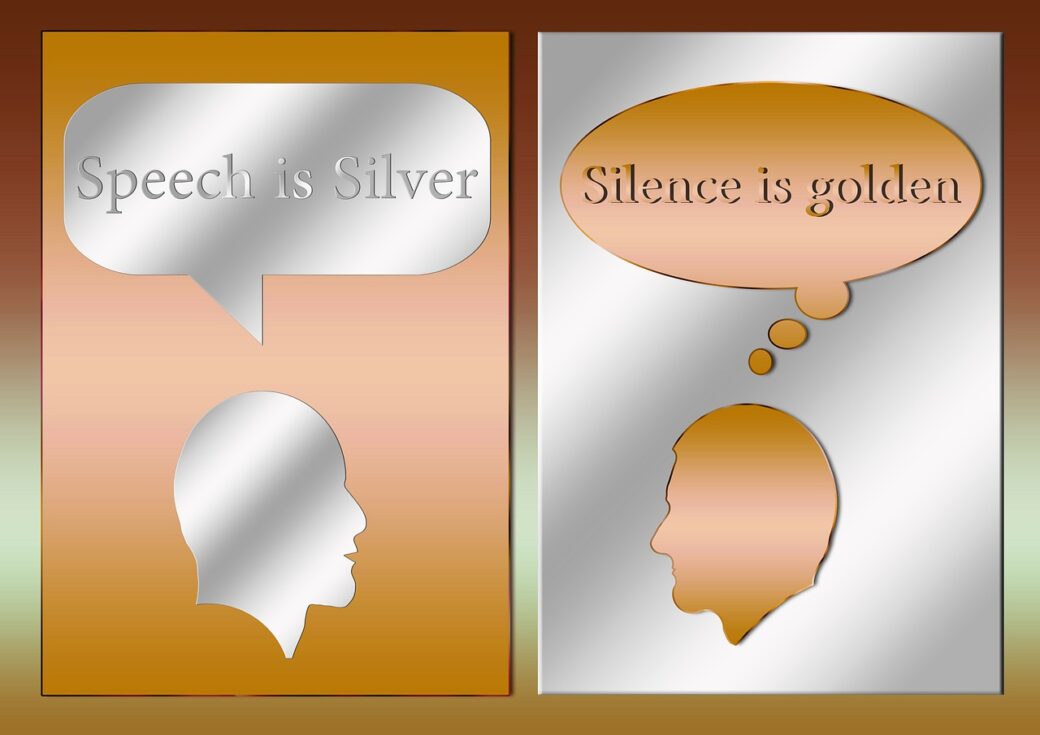In this article, you will discover the art of writing a meditation and how it can allow you to share your inner insights with the world. Whether you are new to meditation or have been practicing for years, this guide will provide you with valuable tips and techniques to help you express your thoughts and experiences in a meaningful and impactful way. By the end, you will be equipped with the tools to create a meditation that not only resonates with others but also allows you to connect deeply with yourself. So, grab a pen and let’s dive into the world of writing meditations!

Understanding Meditation Writing
Explaining the concept of meditation writing
Meditation writing is a unique practice that combines the benefits of both meditation and writing. It involves the process of introspection and self-reflection, allowing you to delve deep into your thoughts and feelings. Through meditation writing, you can explore your inner world and gain insights that may not be readily accessible through conventional writing or meditation alone. It is a powerful tool for self-discovery and personal growth.
Distinction between meditation writing and regular writing
While both meditation writing and regular writing involve the act of putting thoughts into words, they differ in their purpose and approach. Regular writing focuses on storytelling, expressing ideas, or communicating information to others. In contrast, meditation writing is more about personal reflection and exploration. It is a process of connecting with your inner self, understanding your emotions, and finding clarity in your thoughts. The aim is not to produce a polished piece of writing but to gain personal insights and transform your inner world.
Importance of sharing inner insights
Sharing your inner insights through meditation writing can be a powerful way to connect with others on a deeper level. By expressing your thoughts, emotions, and experiences, you offer a glimpse into your authentic self. This vulnerability and openness create a sense of connection and empathy, allowing others to relate to your journey. Your inner insights can inspire, comfort, and encourage others who may be going through similar experiences. It is a beautiful way to create meaningful connections and contribute to the collective wisdom of humanity.
Preparing for Meditation Writing
Setting the right environment for writing
Creating a conducive environment is essential for effective meditation writing. Find a quiet and peaceful space where you can be alone with your thoughts. Ensure that the space is free from distractions, such as electronic devices, noise, or interruptions. You may choose to decorate the space with items that evoke a sense of calmness and tranquility, such as candles, plants, or meaningful objects. Creating a physical environment that supports your inner exploration can enhance the quality of your meditation writing experience.
Mental and emotional preparation
Before starting your meditation writing practice, it is crucial to prepare yourself mentally and emotionally. Take a few moments to relax and let go of any stress or tension. Clear your mind and open yourself to the present moment. Acknowledge any emotions that arise and allow yourself to fully experience them. Cultivate a mindset of curiosity and openness, embracing whatever thoughts and feelings may arise during the practice. By preparing yourself mentally and emotionally, you create a fertile ground for deep self-reflection and personal insights.
Understanding the importance of silence
Silence is an integral part of meditation writing. It allows you to tune in to your inner voice and listen to the whispers of your soul. In the silence, you can hear your thoughts more clearly and access the depths of your emotions. Embracing silence also helps you cultivate a sense of inner stillness and presence, creating a conducive environment for introspection and self-reflection. During your meditation writing practice, honor and appreciate the power of silence, and let it guide you on your journey of self-discovery.

Choosing a Focus for Your Meditation
Selecting a theme or topic
Choosing a theme or topic for your meditation writing is a personal decision. It can be anything that resonates with you and ignites your curiosity. You may opt to explore a particular emotion, a life experience, or a philosophical question. The key is to select a theme that sparks your interest and invites contemplation. By choosing a focus, you provide a framework for your meditation writing, allowing you to delve deeper into your thoughts and emotions surrounding that theme.
Importance of personal resonance
When selecting a theme for your meditation writing, it is vital to choose something that personally resonates with you. The more connected you feel to the topic, the more authentic and meaningful your writing will be. Reflect on your own experiences, beliefs, and values, and consider how they relate to the chosen theme. By writing from a place of personal resonance, you tap into your unique perspective and offer insights that are truly authentic to you.
Ideas for meditation themes
If you’re unsure where to begin, here are some ideas for meditation themes:
- Gratitude: Exploring the power of gratitude and reflecting on the things you are thankful for.
- Self-acceptance: Investigating the concept of self-acceptance and embracing all aspects of yourself.
- Forgiveness: Examining the transformative power of forgiveness and letting go of past hurts.
- Impermanence: Contemplating the nature of impermanence and finding peace amidst change.
- Love and compassion: Reflecting on the meaning of love and compassion in your life and the world.
Remember, these are just suggestions, and you should choose a theme that resonates with you personally.
Emphasizing Personal Insights
Defining personal insights
Personal insights are the revelations and realizations that arise from deep introspection and self-reflection. They are the aha moments when you gain a deeper understanding of yourself, others, or the world around you. Personal insights go beyond surface-level thinking and tap into the depths of your subconscious mind. They can be profound revelations or small, subtle shifts in perspective. When writing a meditation, emphasizing personal insights allows you to share your inner wisdom and offer a fresh perspective to your readers.
How to incorporate personal insights in meditation writing
To incorporate personal insights in your meditation writing, it is essential to be honest and vulnerable. Allow yourself to go beyond the surface and explore your thoughts and emotions with authenticity. Share your personal experiences, reflections, and realizations. Use storytelling techniques to vividly describe moments of insight and how they impacted your understanding of yourself or the world. By incorporating personal insights, you invite readers to connect with your journey and draw their own wisdom from your experiences.
Conveying emotional depth through personal insights
Emotional depth is a crucial aspect of meditation writing. To convey emotional depth, it is important to explore and express your emotions honestly. Reflect on the feelings that arise during your meditation and writing practice. Describe them using language that resonates and evokes emotions in your readers. Be vulnerable and open about your own emotional experiences, offering a heartfelt invitation for others to explore their own emotions. By sharing your emotional depth, you create a space for empathy, connection, and healing.
Getting Started With Your Meditation
Crafting a powerful beginning
A powerful beginning sets the tone for your meditation writing. It captivates the reader’s attention and draws them into your inner world. Start with a compelling opening sentence or a thought-provoking question that immediately engages the reader. Consider using vivid descriptions or metaphors that create a sense of imagery and draw the reader into your experience. By crafting a powerful beginning, you create a strong foundation for your meditation and inspire curiosity in your readers.
Presenting the chosen meditation theme
After the introduction, clearly present the chosen meditation theme to provide focus and context for your writing. Explain why this theme resonates with you personally and why you believe it is worth exploring. Share any personal anecdotes, stories, or experiences that relate to the theme, drawing the reader into your unique perspective. By presenting the chosen meditation theme, you create a framework for your writing and guide the reader on a journey of exploration and self-discovery.
Guidance on keeping a meditation journal
Keeping a meditation journal can be a valuable tool for capturing and deepening your meditation experiences. Consider sharing guidance on maintaining a meditation journal, including tips on recording your thoughts, emotions, and insights. Encourage readers to set aside dedicated time for journaling, preferably right after their meditation session when their thoughts and emotions are still fresh. The journal can serve as a companion to their meditation practice, allowing them to reflect on their experiences and observe patterns over time.
Using Descriptive Language
The importance of vivid descriptions
Vivid descriptions bring your meditation writing to life, engaging the reader’s senses and imagination. Use descriptive language to paint a picture of your surroundings, emotions, and experiences. Consider including sensory details such as colors, textures, sounds, smells, and tastes to create a multisensory experience for the reader. The more vivid and specific your descriptions, the more immersive and impactful your writing becomes.
Using sensory details
Sensory details play a crucial role in meditation writing. They help the reader connect with your experiences on a deeper level. When describing your surroundings, pay attention to the sensory elements present in the environment. For example, describe the cool breeze on your skin, the gentle rustling sound of leaves, or the soothing aroma of incense. When expressing your emotions, explore how they manifest in your body and senses. By incorporating sensory details, you invite the reader to fully immerse themselves in your meditation experience.
Avoiding over-description
While sensory details are important, it is essential to strike a balance and avoid over-description. Too many adjectives or excessive details can overwhelm the reader and distract from the essence of your meditation writing. Choose your words carefully and focus on conveying the emotions, insights, and atmosphere rather than providing an exhaustive description. Allow room for the reader’s imagination and interpretation, leaving space for them to engage with your writing on their own terms.
Applying Positive Affirmations
What are positive affirmations
Positive affirmations are positive statements that help reframe negative beliefs or thoughts. They are powerful tools for boosting self-confidence, cultivating self-love, and manifesting positive change. Affirmations are typically written in the present tense and convey a sense of empowerment and possibility. They serve as reminders of your inherent worth and strengths. Incorporating positive affirmations in your meditation writing can enhance the transformative power of your practice.
How do positive affirmations aid meditation
Positive affirmations aid meditation by shifting your mindset and directing your focus towards positive thoughts and emotions. They help counteract self-limiting beliefs and replace them with empowering statements. Affirmations create a positive and nurturing inner dialogue, fostering a sense of self-compassion and self-acceptance. By continuously reinforcing positive affirmations during your meditation writing, you deepen the connection with your authentic self and foster a mindset of growth and positivity.
Incorporation of affirmations in meditation writing
To incorporate affirmations in your meditation writing, include positive statements or declarations that resonate with the chosen theme. Integrate them naturally into your writing, either as standalone sentences or woven into the narrative. Ensure that the affirmations are aligned with your personal beliefs and values to make them more powerful and authentic. By incorporating affirmations, you infuse your meditation writing with positivity and inspiration, creating an uplifting experience for both yourself and your readers.
Incorporating Mindfulness Techniques
What is mindfulness
Mindfulness is the practice of being fully present and aware in the present moment without judgment. It involves observing your thoughts, emotions, and sensations without getting caught up in them. Mindfulness cultivates a sense of non-reactivity and allows you to respond to life’s challenges with clarity and compassion. By integrating mindfulness techniques into your meditation writing, you can deepen your connection with the present moment and enhance the transformative power of your practice.
Role of mindfulness in meditation
Mindfulness plays a crucial role in meditation writing by grounding you in the present moment. It helps you become aware of your thoughts and emotions, allowing you to explore them with curiosity and non-judgment. By practicing mindfulness during your writing, you create space for introspection and self-reflection, unearthing deeper insights and wisdom. Mindfulness also fosters a sense of authenticity and presence in your writing, making it more engaging and impactful.
Translating mindfulness techniques into writing
To translate mindfulness techniques into your writing, start by cultivating a sense of presence and awareness in the present moment. Focus on your breath, allowing it to anchor you in the here and now. Observe your thoughts as they arise, without attachment or judgment, and gently guide your attention back to the writing process. Practice writing with intention and mindfulness, fully immersing yourself in the words and emotions that emerge. By integrating mindfulness techniques, you infuse your meditation writing with a sense of mindfulness and authenticity.
Concluding Your Meditation
Writing effectively for closure
The conclusion of your meditation writing is an opportunity to provide closure and leave a lasting impression on the reader. Make sure to summarize the main points and themes explored throughout the piece. Reflect on your personal insights and invite the reader to reflect on their own experiences. Crafting a conclusion that ties together the various elements of your meditation and offers a sense of completeness ensures that the reader leaves with a feeling of satisfaction and fulfillment.
Reinforcing the meditation’s core message
In the conclusion, reinforce the core message or lesson that you wish to convey through your meditation writing. Summarize the insights and personal growth that you have experienced and highlight the significance of these revelations. Connect the core message to the broader human experience, offering wisdom and guidance to your readers. By reinforcing the meditation’s core message, you ensure that your writing has a lasting impact and inspires reflection and transformation.
Leaving the reader with a thought to ponder upon
As you conclude your meditation writing, leave the reader with a thought-provoking question or reflection to ponder upon. Offer an open-ended invitation for further exploration and contemplation. Encourage readers to carry the insights gained from your meditation into their own lives and engage in their own inner journey. By leaving the reader with a thought to ponder upon, you empower them to continue their personal growth and exploration long after reading your meditation.
Revising and Polishing Your Meditation
Why revision is necessary
Revision is an essential part of the writing process, ensuring that your meditation is clear, coherent, and impactful. It allows you to refine your ideas, tighten your prose, and enhance the flow of your writing. Through revision, you can identify and correct any grammatical errors, inconsistencies, or areas that require further development. Taking the time to revise and polish your meditation demonstrates your commitment to providing a high-quality reading experience for your audience.
Tips for self-editing
When self-editing your meditation, approach it with a fresh perspective. Take a break from your writing and return to it with a critical eye. Read your meditation aloud to identify any awkward sentence structures or unclear passages. Ensure that your writing flows smoothly from one idea to the next and that there is a logical progression throughout. Pay attention to grammar, punctuation, and spelling errors, taking the time to correct them. Finally, consider seeking feedback from others to gain additional insights and perspectives on your meditation writing.
Getting feedback from others
Seeking feedback from others can provide valuable insights and help you improve your meditation writing. Share your work with trusted friends, writing groups, or mentors who can offer constructive criticism and suggestions for improvement. Consider their perspectives and evaluate how well your meditation resonates with them. Take their feedback into account, making necessary revisions to enhance the clarity, depth, and impact of your writing. By embracing feedback, you refine your meditation writing skills and create a more impactful experience for your readers.
In conclusion, meditation writing is a powerful practice that combines the benefits of introspection, self-reflection, and writing. It provides a unique opportunity to explore your inner world, gain personal insights, and share them with others. By setting the right environment, choosing a focus, emphasizing personal insights, and incorporating mindfulness techniques, you can create a meditation writing experience that is authentic and transformative. So, embrace the power of meditation writing and embark on a journey of self-discovery and creative expression. Your inner insights have the potential to inspire, heal, and connect with others in ways you may have never imagined. Happy writing!




